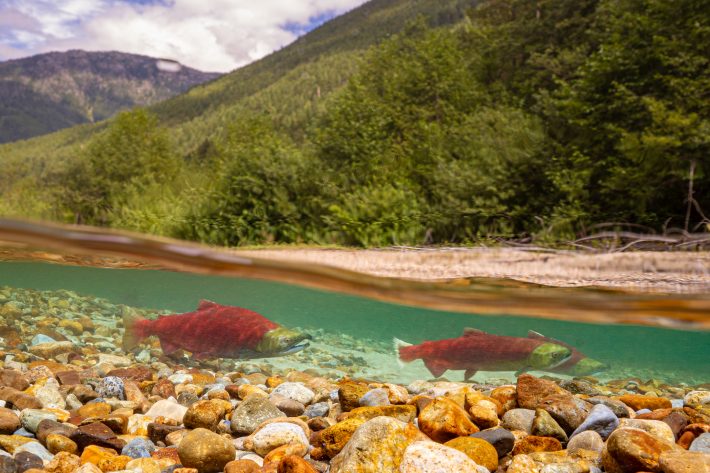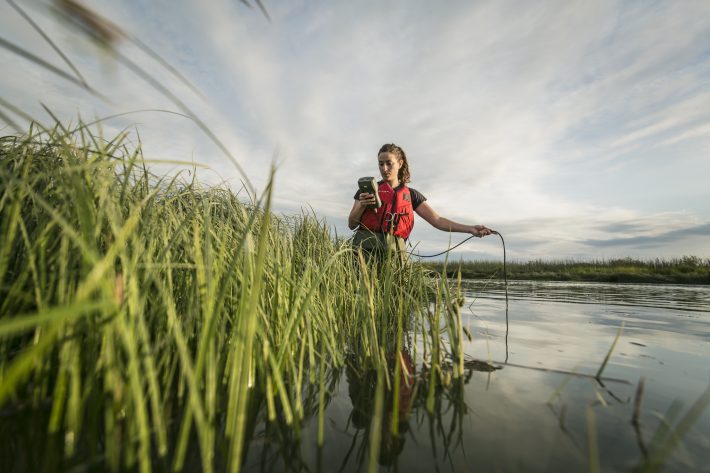Bold sustained action gives hope for wild Pacific Salmon conservation
University of British Columbia press release.
Nineteen major populations of wild Pacific salmon in the Fraser River are projected to decline over the next 25 years—but it’s not too late to boost their chances of recovery. These findings by researchers at the University of British Columbia are published in the British Ecological Societies Journal of Applied Ecology.

According to a new open-access study published today in the Journal of Applied Ecology, active interventions can lift these major salmon populations, known as conservation units (CUs), from declining to “green status” – which means they are healthy and able to sustain fisheries under Canada’s Wild Salmon Policy.
We urgently need to take critical action to bring the Fraser’s salmon back to a sustainable path
“The Fraser is the largest salmon-bearing river in British Columbia, and 19 of the 54 conservation units of wild Pacific salmon that it supports are on a declining trajectory over the next 25 years. We urgently need to take critical action to bring them back to a sustainable path,” says lead author Dr. Lia Chalifour, who completed the research as part of her PhD studies at UBC and University of Victoria.
The authors recommend implementing an integrated habitat strategy that includes barrier removal, estuarine and freshwater restoration, in order to protect the salmon, as well as improving policies for watershed management and protecting remaining habitat.
These actions can shift 14 CUs of wild Pacific salmon to green status at a cost of $20 million CAD per year for 25 years, or the equivalent of just $4.25 per person per year in B.C.
Doubling this investment to around $40 million per year over 25 years, will allow up to 17 of these CUs can recover.
Investment in restoring and conserving remaining habitat can benefit the most salmon populations for the least cost
Without intervention, the authors say none of the 19 CUs examined in the study are likely to be assessed as “green status” in 25 years.
“The Lower Fraser has been subject to extreme habitat loss since European colonization, resulting in devastation of the watersheds that wild salmon rely on, as we saw from the catastrophic damage caused by last year’s floods. Our study found that direct investment in restoring and conserving remaining habitat can benefit the most salmon populations for the least cost,” notes senior author and principal investigator Dr. Tara Martin, a UBC professor who leads the Conservation Decisions Lab at the faculty of forestry.
The study evaluated 11 management strategies to lead the salmon to recovery. The authors also call for a co-governance framework for salmon management between Indigenous and Crown governments, which can increase the success of these management strategies.

The study comes on the heels of renewed provincial and federal commitments to funding for salmon recovery via the British Columbia Salmon Restoration and Innovation Fund. To achieve the best outcome for salmon, these investments must be targeted to regional challenges, notes Dr Chalifour.
“There is a political appetite to support the recovery of wild salmon, however without a road map to direct those recovery efforts, success is going to be limited. Applying decision-making tools such as ‘Priority Threat Management’ facilitates strategic investments in management solutions that will have the greatest possible benefit to wild salmon.”
Priority Threat Management is a conservation decision science framework developed by Dr. Tara Martin. This framework considers the predicted benefit, cost and feasibility of management strategies to rapidly identify which strategies will have the greatest impact on the largest number of populations.
You can read the full research article for free here:
https://besjournals.onlinelibrary.wiley.com/doi/10.1111/1365-2664.14239
Like what we stand for?
Support our mission and help develop the next generation of ecologists by donating to the British Ecological Society.